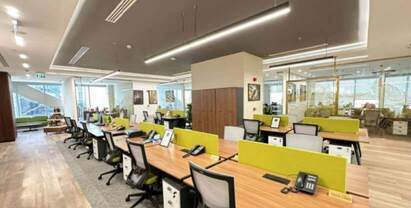
In an era dominated by digital interfaces, ensuring online and technological accessibility is paramount. Commercial interior design now incorporates features that cater to diverse digital needs, such as accessible websites, user-friendly interfaces, and technology that can be easily navigated by individuals with varying abilities. This digital inclusivity extends the reach of commercial spaces beyond the physical realm.
In conclusion, the era of commercial building design is experiencing a powerful transformation—one where accessibility and inclusivity take center stage. By adopting universal design principles and breaking down physical and sensory barriers, commercial spaces become more than just functional environments; they become platforms for empowerment and equality. The commitment to accessibility and inclusivity in commercial interior design is a commitment to a future where every individual can thrive, irrespective of their abilities or background.

Digital accessibility ensures that online platforms and technological interfaces are usable by individuals with varying abilities. This includes accessible websites, user-friendly interfaces, and assistive technologies. Commercial spaces extend their reach and usability beyond the physical environment by prioritizing digital inclusivity.
Inclusive workspaces are designed to support diverse workstyles and abilities. Examples include adjustable desks, ergonomic furniture, quiet zones, and technology solutions that accommodate varying needs. These features ensure that all employees can work comfortably and productively.
The future of commercial design lies in creating spaces that prioritize accessibility and inclusivity as core values. This means adopting universal design principles, leveraging technology, and continuously evolving to meet the needs of all individuals, ensuring that everyone can thrive in these environments.